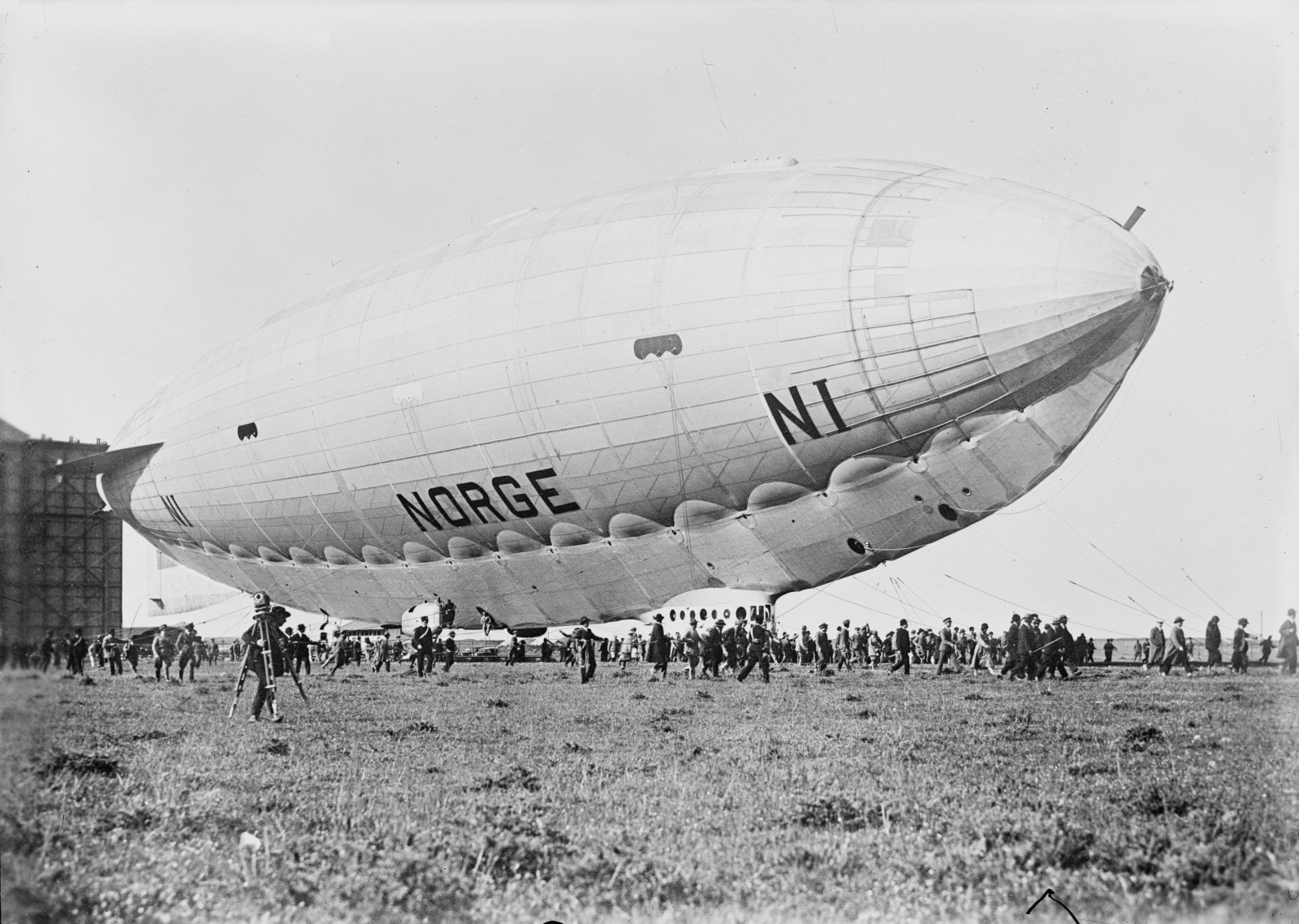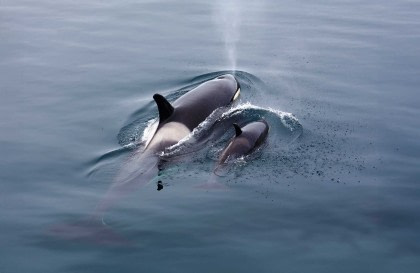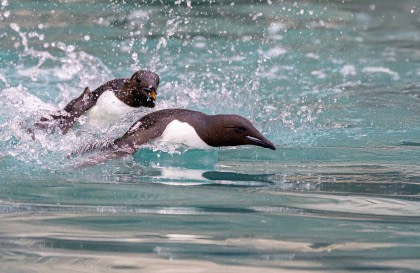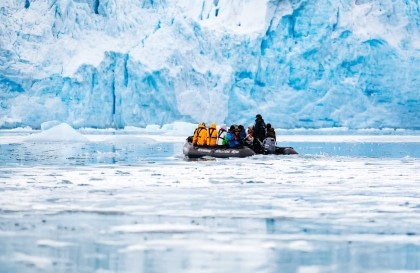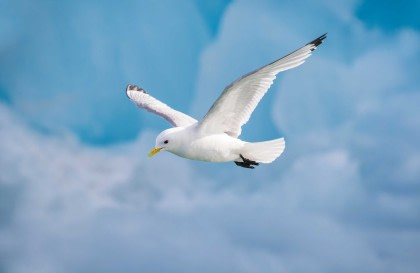In the early morning hours of 12 May 1926, beneath a dull layer of cloud through which the bright midnight sun penetrated only in bursts, the Italian airship Norge droned above an otherwise silent landscape, starkly white, stretching off into haze and featureless expanses of snow and ice.
Aboard were the famed polar explorer Roald Amundsen; his navigator, Lincoln Ellsworth; and Umberto Nobile, the designer and pilot of the Norge, along with thirteen others — including Nobile’s dog, Titiana — all of whom peered from the cramped interior of the airship onto a virgin landscape never before seen by human eyes. This was the North Pole, and the men aboard had just become the first to reach it by air. The Amunsden-Ellsworth 1926 Transpolar Flight had succeeded in the first stage of its goal.
One eye on the pole, another on the route ahead
At 01:25 am (GMT), the expedition found themselves above the North Pole, making Amundsen and Oscar Wisting, the rudder operator onboard, the first to reach both the South and North Poles. Conditions were cramped, with 16 men and a dog squashed into a loud, cold, and uncomfortable craft, heightening tensions made worse when the ceremonial dropping of flags - the American, Norwegian and Italian had, according to Amundsen, 'descended into a circus wagon of the skies,' with Nobile reputedly dropping handfuls of Italian flags and banners against the solitary American and Norwegian banners.
Diplomatic disputes aside, the occasion was an impressive one, made possible both in the design of Norge, and months of intense planning following a meeting between Amundsen and Nobile in 1925, during which Amundsen first proposed the idea of a trans-Arctic air crossing. The expedition had left the isolated settlement of Ny-Ålesund on 11 May at 09:55 am, leaving the peaks and glaciers of Spitsbergen (Svalbard) behind and entering a world full of unknowns.
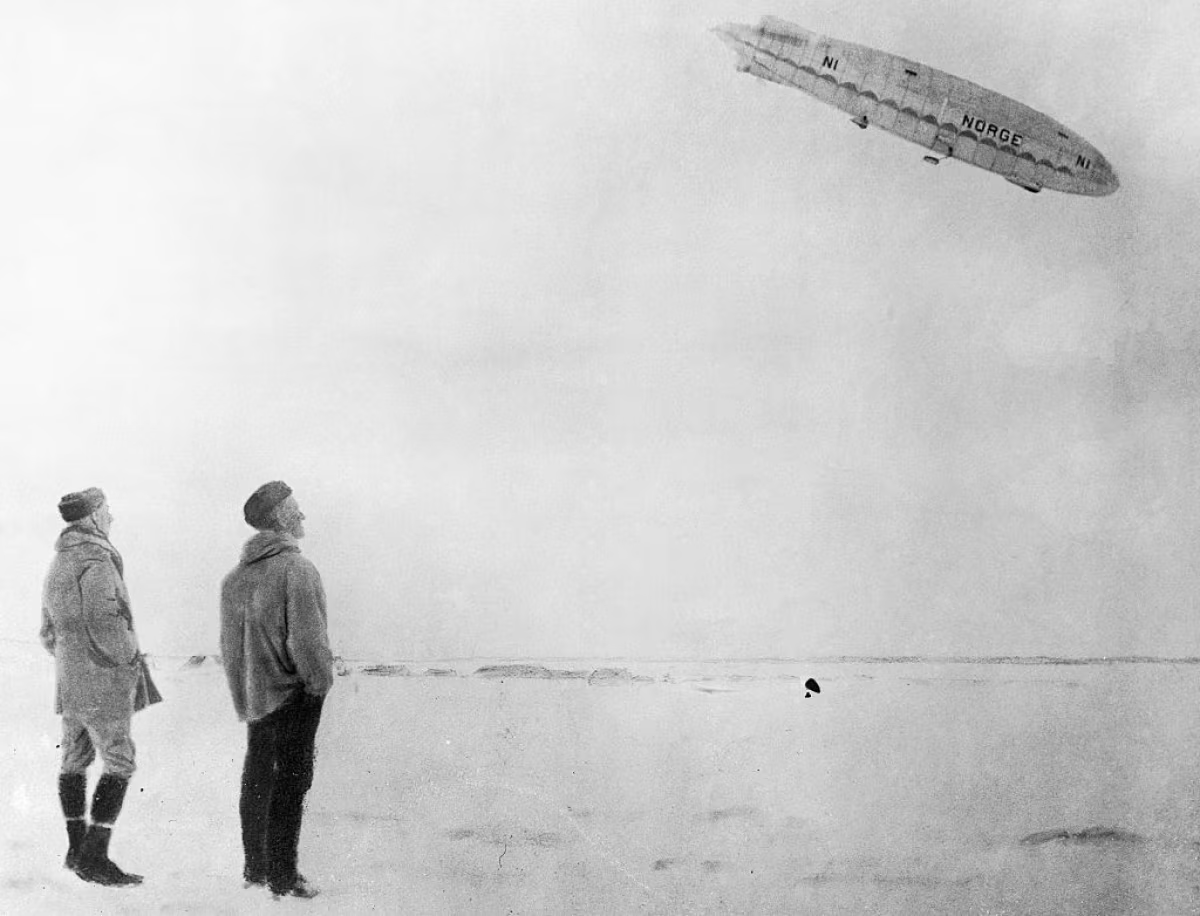
Photo by Bettmann via Getty Images
After reaching the pole, the expedition continued, searching for land before becoming engulfed in thick fog, slowing their progress to a crawl. Ice also began accumulating on the balloon's propellors and skin, threatening to rupture it. By early morning on the following day, 13 May, the expedition sighted land below, soon identifying the settlement of Wainwright, where Amundsen had previously stayed in 1922-23.
More bad weather followed, with the Norge being buffeted by strong winds, carrying it out over the Bering Strait for most of the day of the 13th. As they fought their way past Cape Prince of Wales, the gale continued unabated through the night, forcing the expedition to seek a safe landing as soon as possible.
On 14 May, 72 hours after they had departed, Norge touched down in a small ice-covered bay beside the Alaskan settlement of Teller, around 150km northwest of Nome, their intended destination, realizing Amundsen's theory and dreams, and etching the Norge and the men aboard her into the pages of Arctic history.
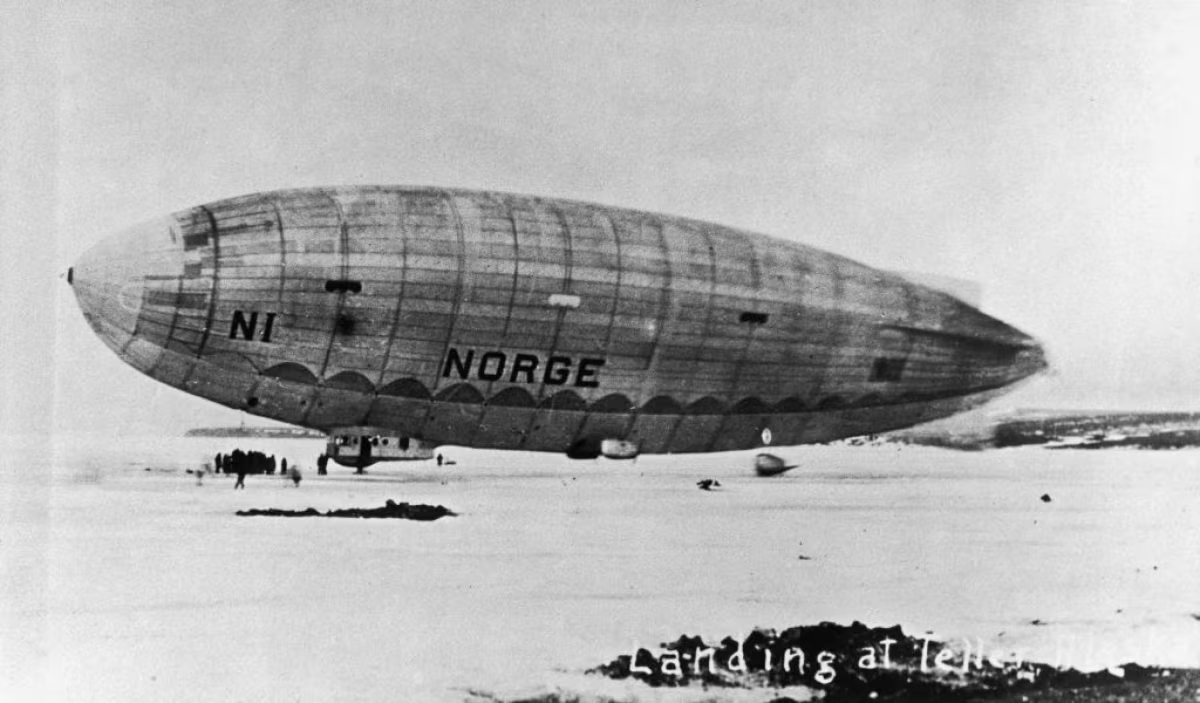
Photo by Pictorial Parade/Getty Images
Records in dispute
Merely days earlier, the American naval officer, aviator, and polar explorer Richard E. Byrd had departed Ny-Ålesund in a Fokker F.VII biplane at 01:50 am, accompanied by Floyd Bennett, flying north towards the pole. By 5 pm, the duo had returned to Ny-Ålesund, reporting that they had arrived at the North Pole just after 9 am on 9 May. However, doubts at the time continue to this day as to whether Byrd managed this feat, with a necessary average airspeed of 160 km/h (100 mph) required to cover his 2400 km (1500 mile) flight in the given time.
No air of competition existed between Amundsen and Byrd, with Amundsen's expedition aiming to complete a trans-Arctic crossing via the North Pole and Byrd simply aiming to reach the North Pole by air. The uncertainty surrounding Byrd's claims was just one of several examples of prior doubtful attempts to be the first to the pole. Explorers Frederick Cook (1908) and Robert Peary (1909) both claimed to have reached the pole over land. However, a lack of proof or credible navigation records continues to cast these in doubt.
Due to this uncertainty, today, Amundsen and the other men aboard the Norge are officially listed as being the first to reach the North Pole, either by land or by air, and were undoubtedly the first to succeed in a trans-Arctic crossing via the North Pole.
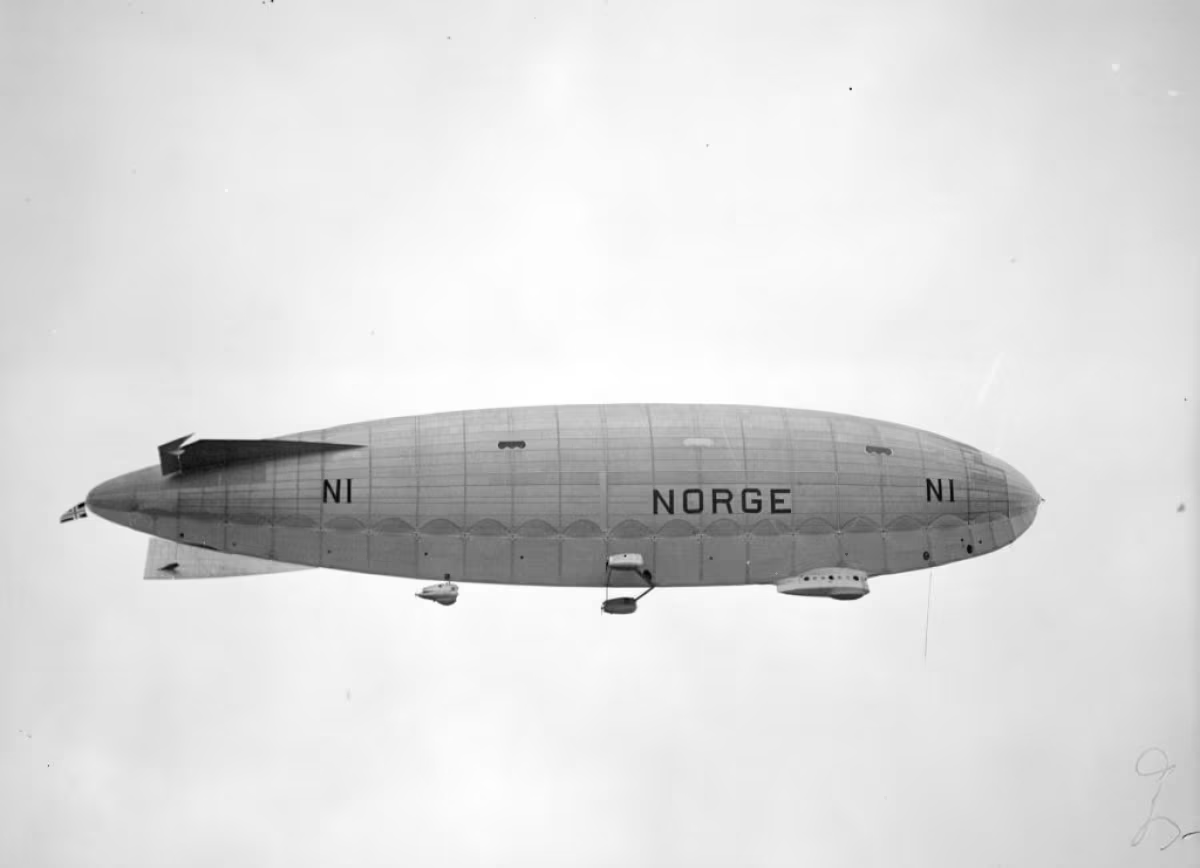
Photo by Kirby/Topical Press Agency/Getty Images
The airship triumphs over the balloon in the race for the Arctic
The Amunsden-Ellsworth 1926 Transpolar Flight was not the first to attempt to reach the North Pole and explore the expanse of ice by air. In 1897, the three men of Andrée's Arctic balloon expedition perished while trying to voyage over the North Pole from Svalbard to Russia or Canada aboard the hot air balloon Örnen. Their fate was a mystery for 33 years before the remains of the three men and their final camp were discovered on the Arctic island of Kvitøya in 1930.
Between 1905 and 1909, the American explorer and aeronaut Walter Wellman attempted to reach the North Pole by airship, christened America. However, both attempts ended in failure, with engine explosions and mechanical issues, meaning that the furthest north that Wellman reached was around 100km from Svalbard's shores.
Amundsen had also previously attempted to reach the Pole by air in 1925. Along with five others, including Lincoln Ellsworth, Amundsen departed Ny-Ålesund in two Dornier aircraft, spending more than eight hours in the air, reaching 87°43' N, where they landed on the ice. Due to damage to one of the planes, it became apparent that it could not be flown back. For over three weeks, the group worked to build a suitable take-off strip, surviving in the hull of the salvageable airplane amidst freezing temperatures before all six men clambered aboard the surviving aircraft and flew back to the coast of Svalbard on 15 June, running out of fuel before being picked up by a hunting ship.
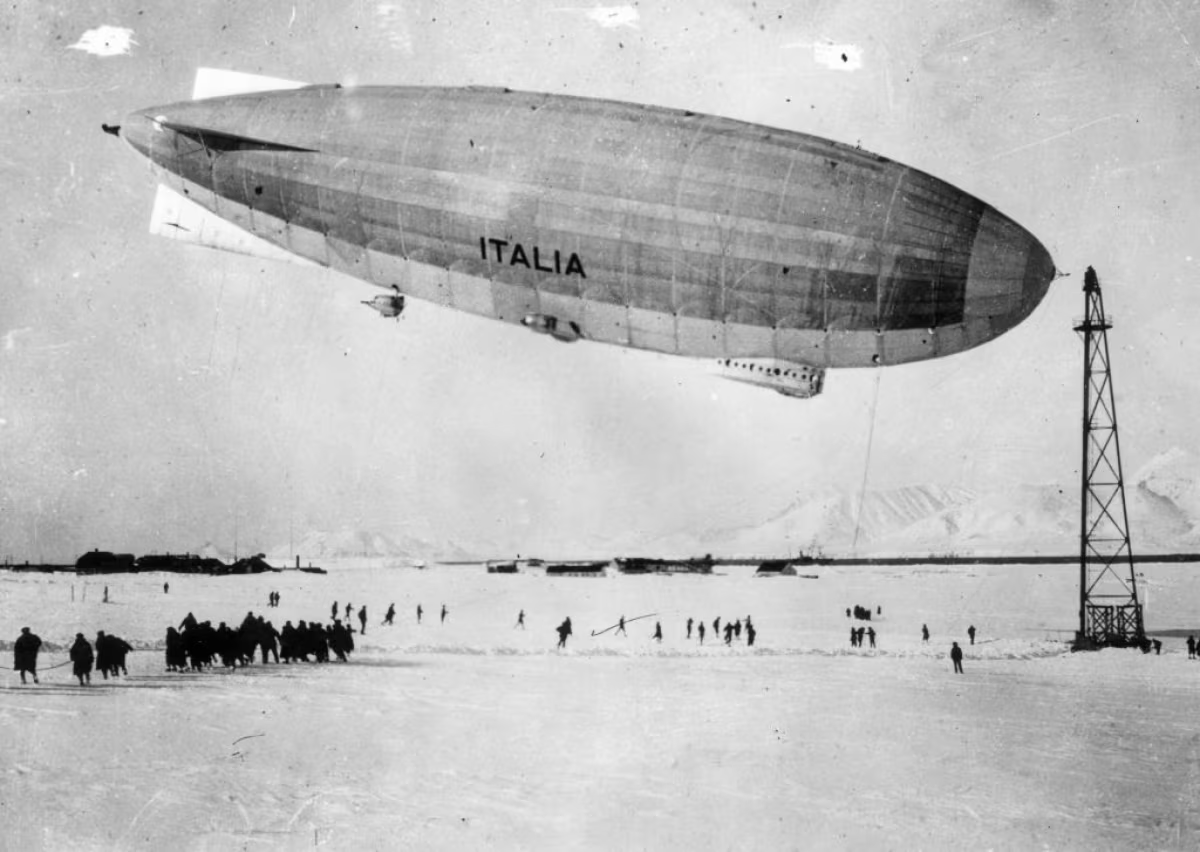
Photo by Topical Press Agency/Getty Images
Umberto Nobile would go on to attempt further exploration of the Arctic by airship, curtailed when he, along with 18 others, became stranded after the airship Italia crashed in 1928.
In the list of 17 fatalities associated with the crash and recovery efforts was Roald Amundsen himself, who vanished while searching for the survivors of Italia aboard a Latham-477 flying boat along with five others. The crash of Italia also claimed the lives of several others who were also part of the Amunsden-Ellsworth 1926 Transpolar Flight; Renato Alessandrini, Natale Cecioni, Attilio Caratti, and Ettore Arduino.
Visit Ny-Ålesund and touch polar history
Ny-Ålesund is a destination visited on many of our expedition cruises in Spitsbergen (Svalbard). During a visit to Ny-Ålesund, you may have the opportunity to see the mooring facilities that Amundsen used for his triumph aboard Norge in person.
A small museum can also be visited in Ny-Ålesund, charting the town's mining history and role in Arctic exploration. You can also learn about the important scientific research carried out in Ny-Ålesund and pay your respects to Roald Amundsen, whose bust can be found in the center of the settlement.
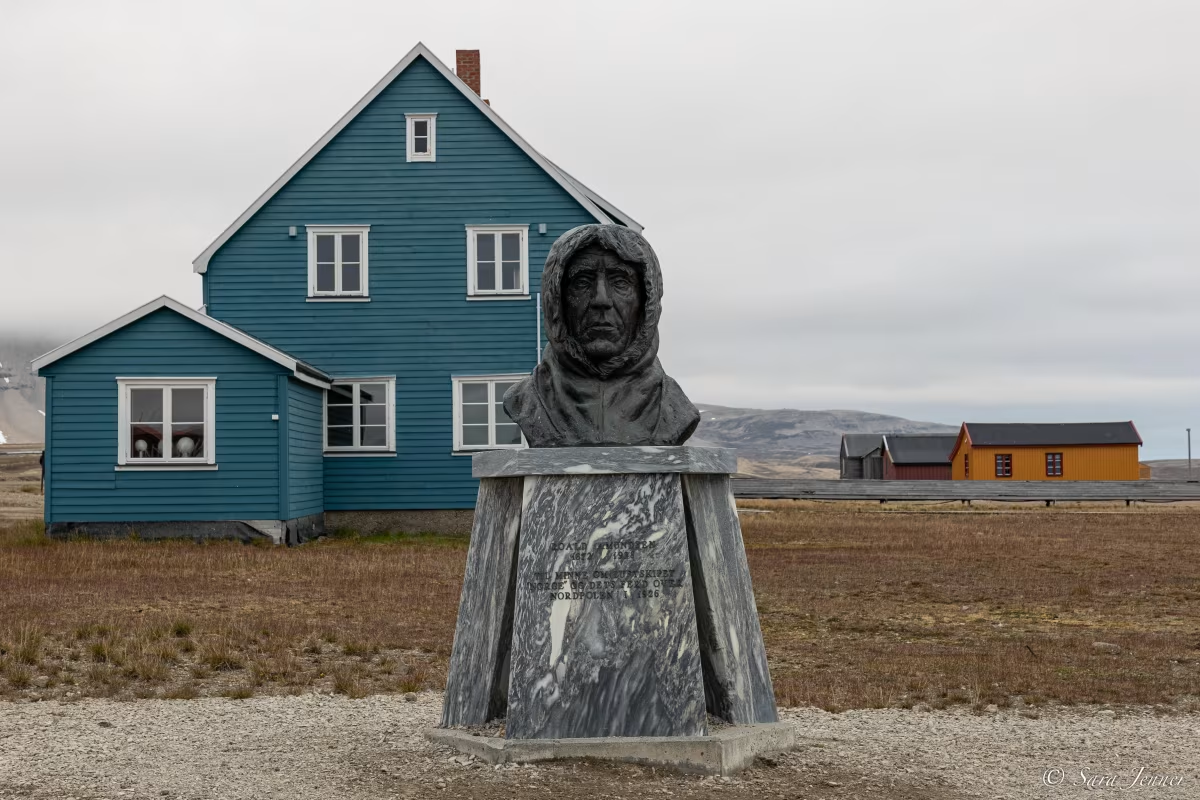
Picture by Sara Jenner
